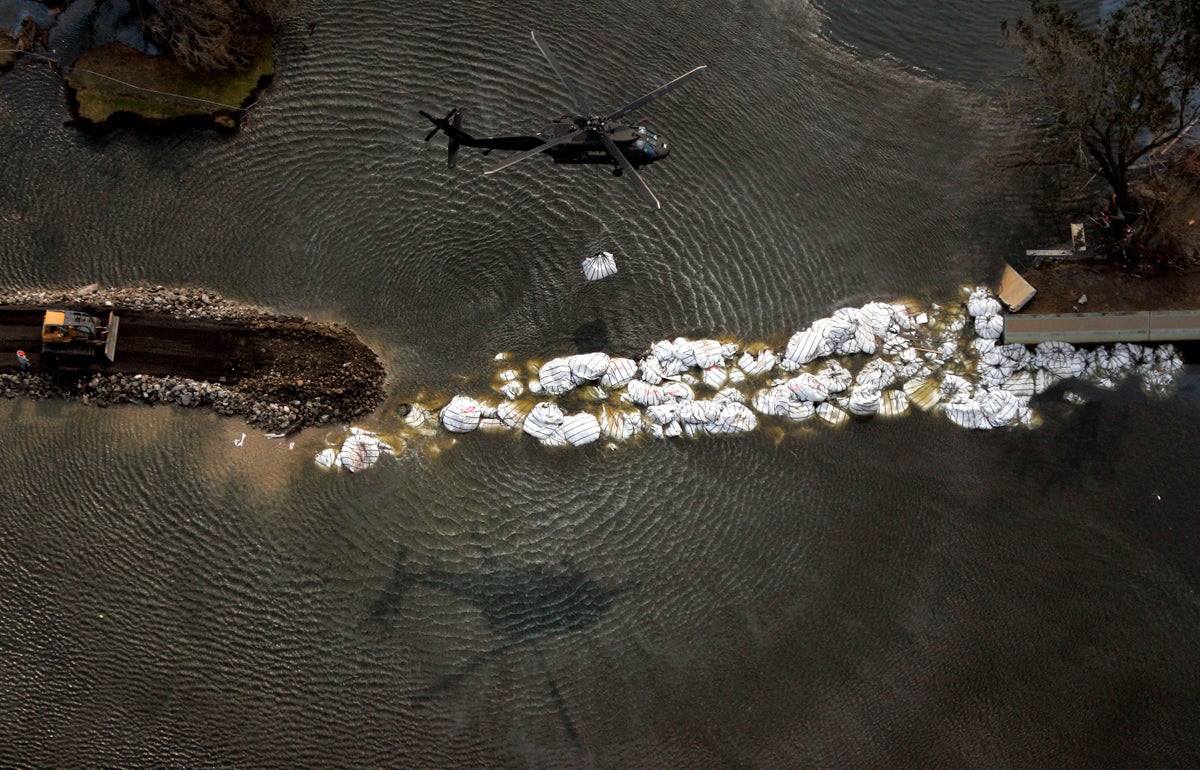
Future engineers need a greater understanding of past failures — and how to avoid repeating them — a Louisiana-based nonprofit said to mark Tuesday's 18th anniversary of the deadly, catastrophic levee breaches that inundated most of New Orleans during Hurricane Katrina.
Having better-educated engineers would be an important step in making sure that projects such as levees, bridges or skyscrapers can withstand everything from natural disasters to everyday use, said Levees.org. Founded in 2005, the donor-funded organization works to raise awareness that Katrina was in many ways a human-caused disaster. Federal levee design and construction failures allowed the hurricane to trigger one of the nation’s deadliest and costliest disasters.
The push by Levees.org comes as Hurricane Idalia takes aim at Florida's Gulf Coast, threatening storm surges, floods and high winds in a state still dealing with lingering damage from last year’s Hurricane Ian.
And it's not just hurricanes or natural disasters that engineers need to learn from. Rosenthal and H.J. Bosworth, a professional engineer on the group's board, pointed to other major failures such as the Minneapolis highway bridge collapse in 2007 and the collapse of a skywalk at a hotel in Kansas City, Missouri, among others.
Levees.org wants to make sure students graduating from engineering programs can “demonstrate awareness of past engineering failures.” The group is enlisting support from engineers, engineering instructors and public works experts, as well as the general public. This coalition will then urge the Accrediting Board of Engineering Schools to require instruction on engineering failures in its criteria for accrediting a program.
“This will be a bottom-up effort,” Sandy Rosenthal, the founder of Levees.org, said on Monday.
Rosenthal and her son Stanford, then 15, created the nonprofit in the wake of Katrina’s Aug. 29, 2005 landfall. The organization has conducted public relations campaigns and spearheaded exhibits, including a push to add levee breach sites to the National Register of Historic Places and transforming a flood-ravaged home near one breach site into a museum.
Katrina formed in the Bahamas and made landfall in southeastern Florida before heading west into the Gulf of Mexico. It reached Category 5 strength in open water before weakening to a Category 3 at landfall in southeastern Louisiana. As it headed north, it made another landfall along the Mississippi coast.
Storm damage stretched from southeast Louisiana to the Florida panhandle. The Mississippi Gulf Coast suffered major damage, with surge as high as 28 feet (8.5 meters) in some areas. But the scenes of death and despair in New Orleans are what gripped the nation. Water flowed through busted levees for days, covering 80% of the city, and took weeks to drain. At least 1,833 people were killed.







